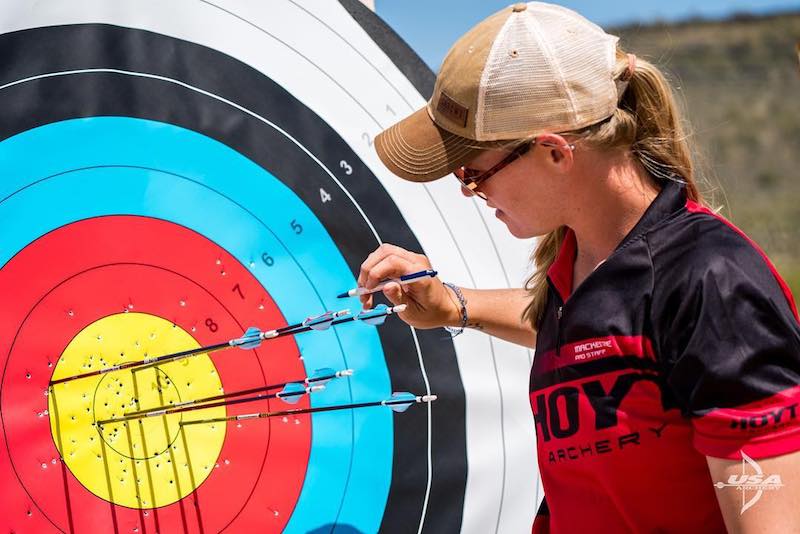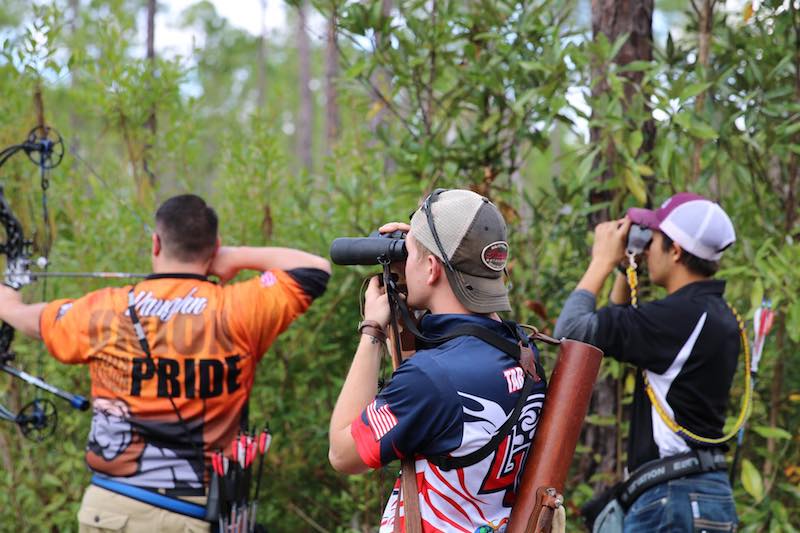Tournaments are a fun way to compete in archery, but learning their rules can be overwhelming. The USA Archery Event Reference Guidebook is here to help.
“The guidebook can prevent archers from being nervous about their first event,” said Brad Fiala, USA Archery’s event-development manager.
USA Archery created the guidebook to help new archers, parents and coaches break down the basics of participating in events sanctioned by USA Archery. It contains information about equipment, dress codes, age classes, range and scoring procedures, etiquette and sportsmanship, where to go when arriving, and links to more specific information. The book comes in a PDF format for downloading and printing. Embedded links go to websites with more information.

USA Archery encourages those preparing for a tournament to read the book and keep it handy for future reference. Understanding rules helps archers practice the right distances, and with target faces and equipment that meet World Archery/USA Archery standards. “Archers feel calmer and more confident when they register for an event, and know what to expect when they arrive,” Fiala said.
Following rules prevents disqualification and improves performance. “Archers learn to be proficient with their focus and mental game, and feel more independent when competing,” Fiala said. “They’re able to maximize their potential by knowing when to call a judge for an arrow call, or when experiencing an equipment failure. This allows them to relax and enjoy the experience of competing.”
The most frequent questions concern dress codes and age classes. Archers also ask about the barebow definition, and which 10-ring is used for scoring indoor rounds for compound archers.

The guidebook also helps archers in other programs who aren’t familiar with USA Archery events. The organization hopes to inform archers about USA Archery opportunities like the Collegiate Archery Program, Junior Olympic Archery Development program, state and national events, the Regional Elite Development and Resident Athlete Program; and international events like World Cups, World Championship, and Olympic and Paralympic Games.
Fiala hopes the guidebook gives archers the confidence to explore competitive events. “Archery events are a great place to make new friends, achieve your goals, and learn new lessons,” Fiala said. “Archers and coaches are always supportive of each other, and take pride in helping or introducing new people to the sport.”
As helpful as the guidebook is, you don’t have to carry it everywhere. If any questions arise at an event, consult a coach or judge. “You’ll get a friendly response from anyone available,” Fiala said.
The guidebook can be downloaded here. Let’s review some information in the guidebook:
Before Signing Up

Make sure your USA Archery membership is current. Determine your age class. Review World Archery equipment rules.
What to Bring
- Binoculars/spotting scope;
- Pencil for keeping score;
- Healthy snacks and drinks;
- Shade tent and chairs for parents/spectators;
- Weather-related items like hat, umbrella, sunglasses and rain jacket;
- Shooting equipment and backup items like extra nocks, arrows, release, fletchings and finger tab.
Dress Code
- Denim is allowed, but it can’t have holes or be ripped/torn.
- Camo clothing is not allowed.
- Shoes must cover your entire foot.
- Shirts must cover the midriff when at full draw.
- Leggings are allowed, but can’t be transparent/translucent above the knee.
Outdoor Compound and Indoor Events
When looking at the target face, the “A” position archer shoots the top left target and shoots on the “A” line. The “B” position shoots the top right target and shoots on the “A” line. The “C” position shoots the lower left target and shoots on the “B” line. The “D” position shoots the bottom right target and shoots on the “B” line.
Outdoor Recurve
Target position “A,” “B,” “C” and “D” indicate where you stand on the shooting line, and if you shoot “A” or “B” line. Position A shoots the left side of the center target hash mark, on the “A” line. Position “B” shoots the right side of the center target hash mark, on the “A” line. Position “C” shoots the left side of the center target hash mark, on the “B” line. Position “D” shoots the left side of the center target hash mark, on the “B” line. All four archers shoot at the same target face in the outdoor competition format.
Range Commands, Tournament Procedure

Most venues have signs with “A” or “B” indicating which archer shoots first. A/B position archers shoot first when the sign says “A.” Archers in the C/D position shoot first when the sign shows “B.”
Two beeps mean pick up your bow and proceed to the shooting line. Nock an arrow but don’t raise your bow until you hear one beep. All archers must stand with one foot on each side of the shooting line. After one beep, shoot your arrows at your target. Indoors, you shoot three arrows; outdoors, you’ll often shoot six.
Most events have a timing clock. Indoors, you have 2 minutes to shoot three arrows. If shooting six arrows outdoors, you have 4 minutes to shoot your arrows. If there’s no timing clock, a judge displays a green flag until 30 seconds of shooting time remains. At that time they display a yellow flag until time runs out. You lose points if you shoot after time expires. Place your bow on the bow rack (indoor) or bow stand (outdoor), and wait behind the waiting line.
If you shoot in the second group, be prepared with your bow as the first group finishes. When you hear two beeps, proceed to the shooting line and continue as above. If you drop an arrow, leave it on the floor/ground. As long as the arrow is not past the 3-meter line, it’s not considered a shot arrow. When three beeps sound, all archers advance to the target to score arrows.
Scoring
USA Archery provides competitors with scorecards. Two archers serve as scorekeepers, and use two paper scorecards or one paper card and one tablet. A third archer calls the arrows from highest to lowest for each competitor. The fourth archer oversees the process. Don’t touch the target or arrows until every arrow score is entered. If an arrow is touching a line, it scores the higher value. When in doubt, ask a judge.




